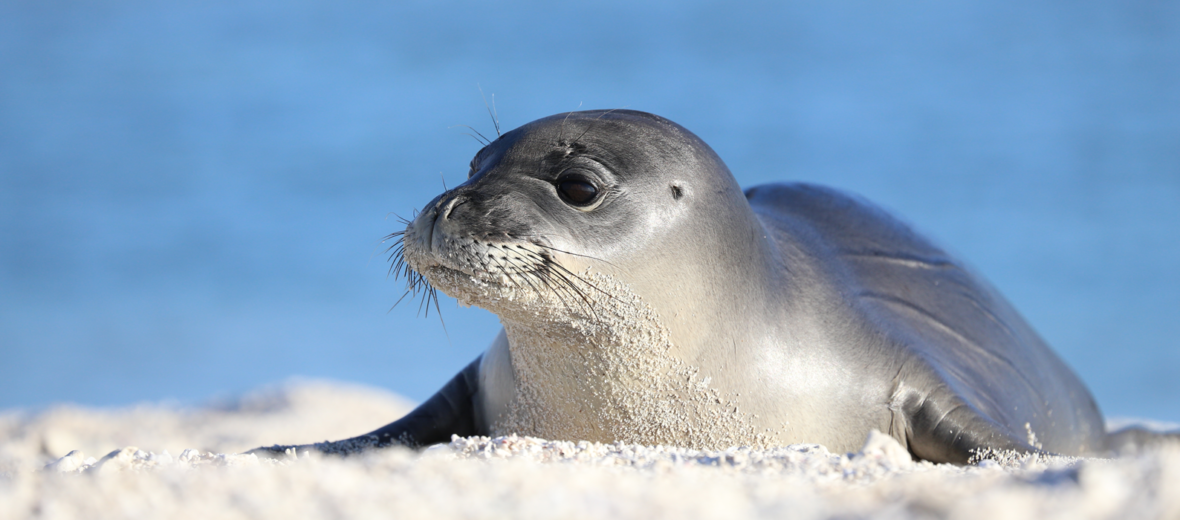
The Mediterranean monk seal can be found in only a few remaining isolated locations in the Atlantic Ocean. They prefer open beaches and sea caves. Due to the fact that there are only an estimated 700 individuals remaining in the wild, to date, these earless seals are considered to be the rarest of all the known pinnipeds. For this reason, they are listed as Critically Endangered by the IUCN. A couple of their biggest threats to survival are invasive species, habitat destruction, human interference, and disease.
First the Stats…
Scientific name: Monachus monachus
Weight: Up to 610 lbs.
Length: Up to 8.5 feet
Lifespan: Up to 45 years
Now on to the Facts!
1.) Monk seals, like other seals, are diurnal (active during the day).
2.) These seals are typically solitary. Only coming together to mate.
3.) They can feed at depths of up to 750 feet. But they prefer shallower water.
4.) Mediterranean monk seals are carnivores (eat meat) that target sea life as prey, making them piscivores (eat fish).
5.) The Mediterranean monk seal preys on fish, octopus, squid, mollusks, and eels.
But wait, there’s more on the Mediterranean monk seal!
6.) A group of seals is called a pod, harem, herd, bob, rookery, or colony.
7.) Monk seals are intelligent and have even been observed lifting rocks, underwater, to reveal prey items.
Did you know…?
It’s considered a class C felony to touch, capture, harass, injure, or especially kill any monk seals. Violators can be charged a fine and be imprisoned.
8.) They are polygynous (males mate with multiple females).
9.) Females birth a single pup, after up to an 11 month gestation (pregnancy).
10.) There were 3 species of monk seal: Hawaiian, Mediterranean, and the Caribbean (which, sadly, went extinct in the 20th century).
But wait, there’s still more on the Mediterranean monk seal!
11.) Monk seals are the only earless seal located in the tropics.
12.) Mediterranean monk seals are such skillful swimmers that they can, almost easily, dodge sharks.
13.) These hungry seals eat up to 6.6 lbs. of food a day.
14.) Unlike other seals, these critters have no known natural predators.
Now a Short Mediterranean Monk Seal Video!
Be sure to share & comment below! Also, check out the Critter Science YouTube channel. Videos added frequently!
Want to suggest a critter for me to write about? Let me know here.



